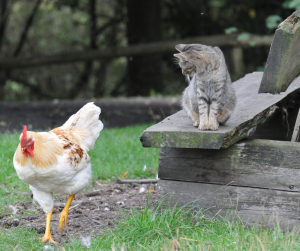
Background
The issue of avian flu in pet food requires us to begin with the legal definition of adulteration.
According to U.S. law, a food is considered adulterated “if it bears or contains any poisonous or deleterious substance which may render it injurious to health; but in case the substance is not an added substance, such food shall not be considered adulterated under this clause if the quantity of such substance in such food does not ordinarily render it injurious to health…”
The distinction is critical.
- If a harmful substance is added through human action or negligence, it is automatically considered an adulterant.
- If the substance is inherent—naturally present in the food—it is only considered adulterated if it exists at levels ordinarily injurious to the intended consumer.
This reasoning has long applied to Salmonella in poultry: its mere presence is not enough to classify it as an adulterant unless it is pathogenic and present at levels that can cause illness.
The same principle applies to avian (bird) flu. No pet food manufacturer is “adding bird flu” into products—such an idea is, frankly, ludicrous. Rather, as with Salmonella, avian flu may be naturally present in poultry, whether sold in grocery stores or used in raw pet food. The presence of such viruses must therefore be evaluated on the basis of risk and demonstrated harm, not assumption.
What we know today:
- There are approximately 75 million pet cats in the United States.
- Since 2004, a total of 607 cats in the U.S. have tested positive for bird flu (data accurate as of 1 August 2025).
- Of these, about half did not survive.
- In only three cases has raw pet food been cited as a potential factor. These few cases do not demonstrate a clear correlation, let alone proven causation.
Position Statement
The simple presence of bird flu in raw poultry sourced from a USDA-inspected and passed facility, or another credentialed supplier, is not cause for a recall.
A recall situation would only be warranted if all of the following conditions are met:
- Quantified risk – Bird flu is detected and measured in a product at a level demonstrated to cause harm in cats. (To date, no such threshold has been scientifically established.)
- Direct linkage – An ill or deceased cat tests positive for bird flu, and genetic sequencing confirms that the virus strain is identical to that found in the suspect product.
- Confirmed product source – Testing is performed on sealed, properly handled, unopened product to eliminate other possible exposure routes.
Without all three conditions met, recall actions are not scientifically, legally, or ethically justified.
Safety Measures
We remind cat owners that responsible sourcing and handling are important for pet health. Our manufacturers maintain strict quality controls and provide a range of options—including products that undergo processing steps designed to reduce pathogen risks.
In addition, we encourage owners to support their cats’ overall health through species-appropriate nutrition and lifestyle factors. A strong immune system remains one of the most effective defenses against many diseases—not only avian flu.

